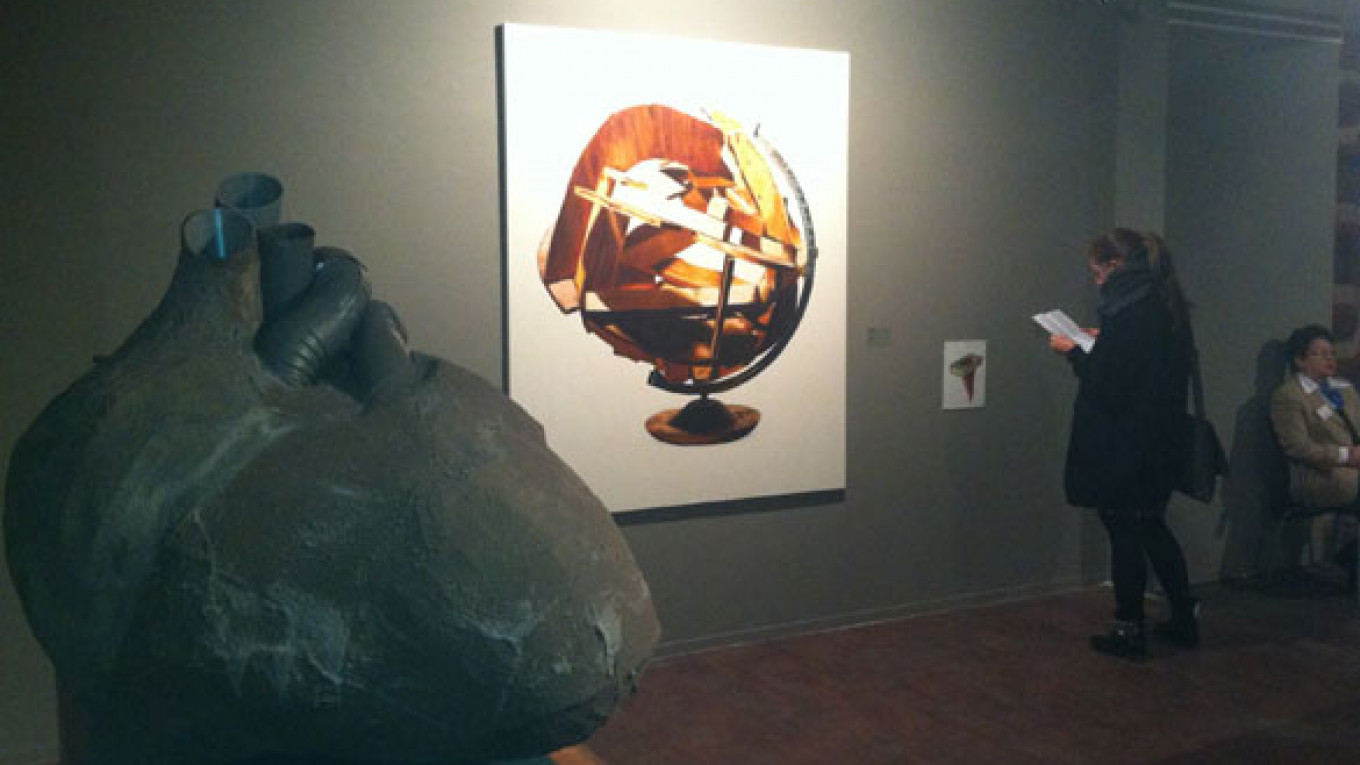Over the past month, the Fifth Moscow Biennale of Contemporary Art has brought scores of well-known foreign artists to town, as well as numerous famous Russians who permanently live and work abroad.
Andrei Roiter falls into the latter category, a Russian artist who has been operating out of Amsterdam for the past two decades, long enough that the Dutch government has sponsored his latest exhibit in Moscow as part of the Netherlands-Russia Year of Cultural Exchange. The Moscow Times spoke with Roiter shortly before the opening of his exhibit, "Open House," which is currently on display at the Moscow Museum of Modern Art, or MMOMA, on Yermolayevsky Pereulok.
Roiter explained that the exhibit cannot be considered a true retrospective of his work as it contained only works from Dutch collections with a few additions from Moscow holdings. With Roiter's work spread around the world, gathering his many works is a task that no organizer has yet attempted.
The exhibits on display at MMOMA on Yermolayevsky are loosely organized around the theme of travel, and roughly chart the artist's work in the two decades since his departure from Russia. Roiter was quick to emphasize the theme of travel referred to "not only physical travel, with a suitcase on the train, but also the idea that one's whole life is a kind of endless journey within our consciousness," adding that "there is also an element of daydreaming here."
The title of the exhibit, "Open House," calls to mind a space for sale, though Roiter said he preferred ambiguity as to what precisely was being shown — a house, a workshop, a business — adding that he was showing his own private collection, and so it could be considered his personal open house.
While standard travel tropes like a suitcase or an airplane are represented in this selection, he has also included works like paintings of Borat, a video of a paunchy, hirsute juggler, and an immense sculpture of a human heart made of concrete and PVC pipe.
Even suitcases, planes, cameras and globes are presented in new and different ways: Roiter's suitcases hang from the ceiling, punched full of holes or covered with graffiti-like scrawl, while his "plane" is in fact a glider made out of a old-fashioned child's sled. Similarly, his globes look like disco balls or are cubist-like wood contraptions, revealing very little useful geography.
Roiter, who for years has lived in Amsterdam and New York and circled the globe for his exhibitions, is no stranger to travel of all varieties. In fact, this is only Roiter's third exhibit in his native Russia, a land he long ago moved away from in favor of greater creative opportunities.
"I cannot speak for other artists, but I did not consciously try to leave Russia," Roiter explained. "It just happened that in the West, I received proposals for exhibits, purchases of my work, and cooperation with museums starting in the late '80s, and started to go there more and more frequently, found myself occupied there, and wound up living in the West."
"In 1989, I went to Vienna for the opening of an exhibit intending to return to Russia in two weeks, and in the end I did not come back until five years later when my passport expired," Roiter recalled. Like many Russian artists, Roiter said that even now, when he is quite well-known, he simply does not feel the same artistic and commercial opportunity in Russia that he does in the West.
Roiter considered many possible reasons for the lack of opportunities in Russia: his long absence, his lack of connections with the Moscow art scene, even the very nature of his works. "The works are on the one hand not Russian enough, and on the other hand not Western enough — that is, they are not glamorous, bright or poster-like, they are not obvious — this hinders their reception here," Roiter said.
Roiter expressed that he felt great artistic potential in Russia and talented youth who could become great artists, but said the art market was undeveloped, with few collectors and limited infrastructure. Russian artists, Roiter said, had to solve the problem of their own authenticity, negotiating a careful path between Russian cliches and Western styles, finding their own mode of operation and their own market.
"Open House" will run until Nov. 24 at the Moscow Museum of Modern Art at 17 Yermolayevsky Pereulok, Metro Mayakovskaya.
Contact the author at [email protected]
A Message from The Moscow Times:
Dear readers,
We are facing unprecedented challenges. Russia's Prosecutor General's Office has designated The Moscow Times as an "undesirable" organization, criminalizing our work and putting our staff at risk of prosecution. This follows our earlier unjust labeling as a "foreign agent."
These actions are direct attempts to silence independent journalism in Russia. The authorities claim our work "discredits the decisions of the Russian leadership." We see things differently: we strive to provide accurate, unbiased reporting on Russia.
We, the journalists of The Moscow Times, refuse to be silenced. But to continue our work, we need your help.
Your support, no matter how small, makes a world of difference. If you can, please support us monthly starting from just $2. It's quick to set up, and every contribution makes a significant impact.
By supporting The Moscow Times, you're defending open, independent journalism in the face of repression. Thank you for standing with us.
Remind me later.






